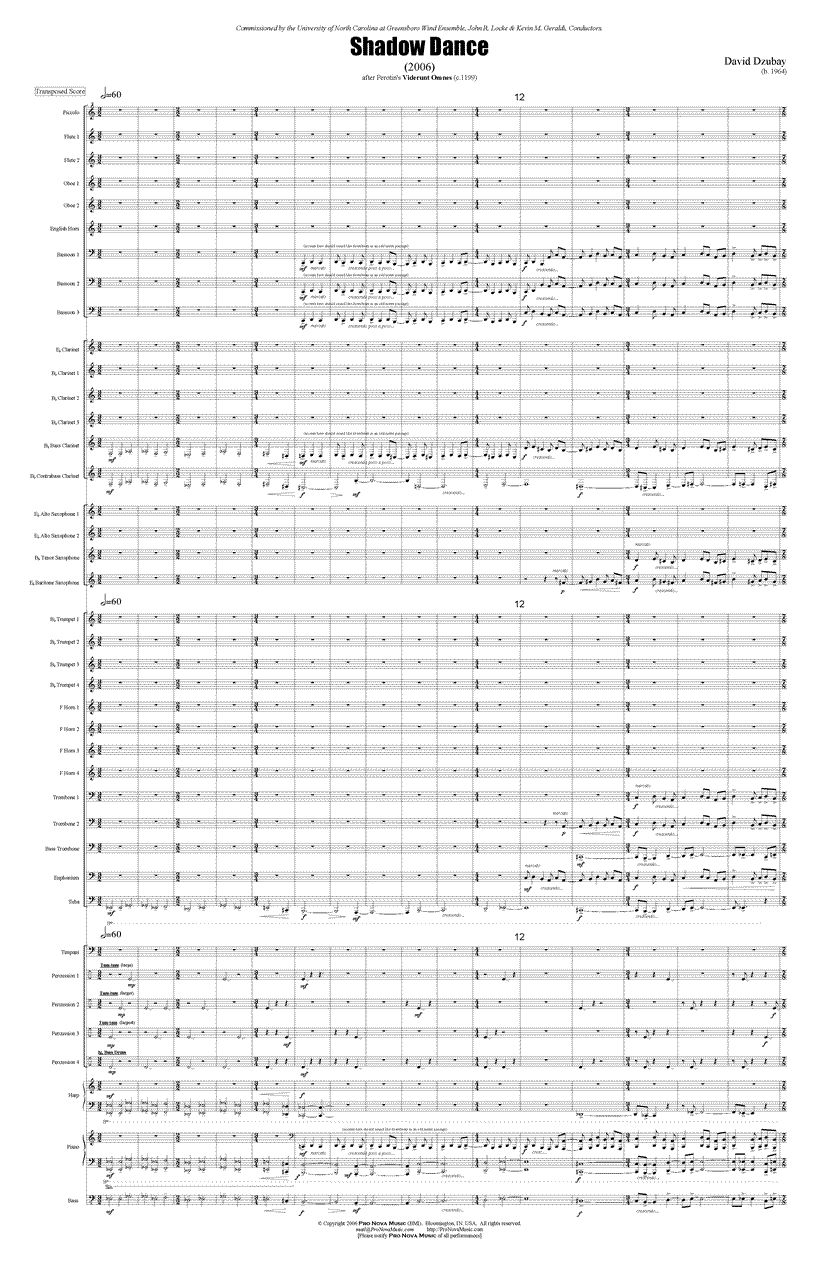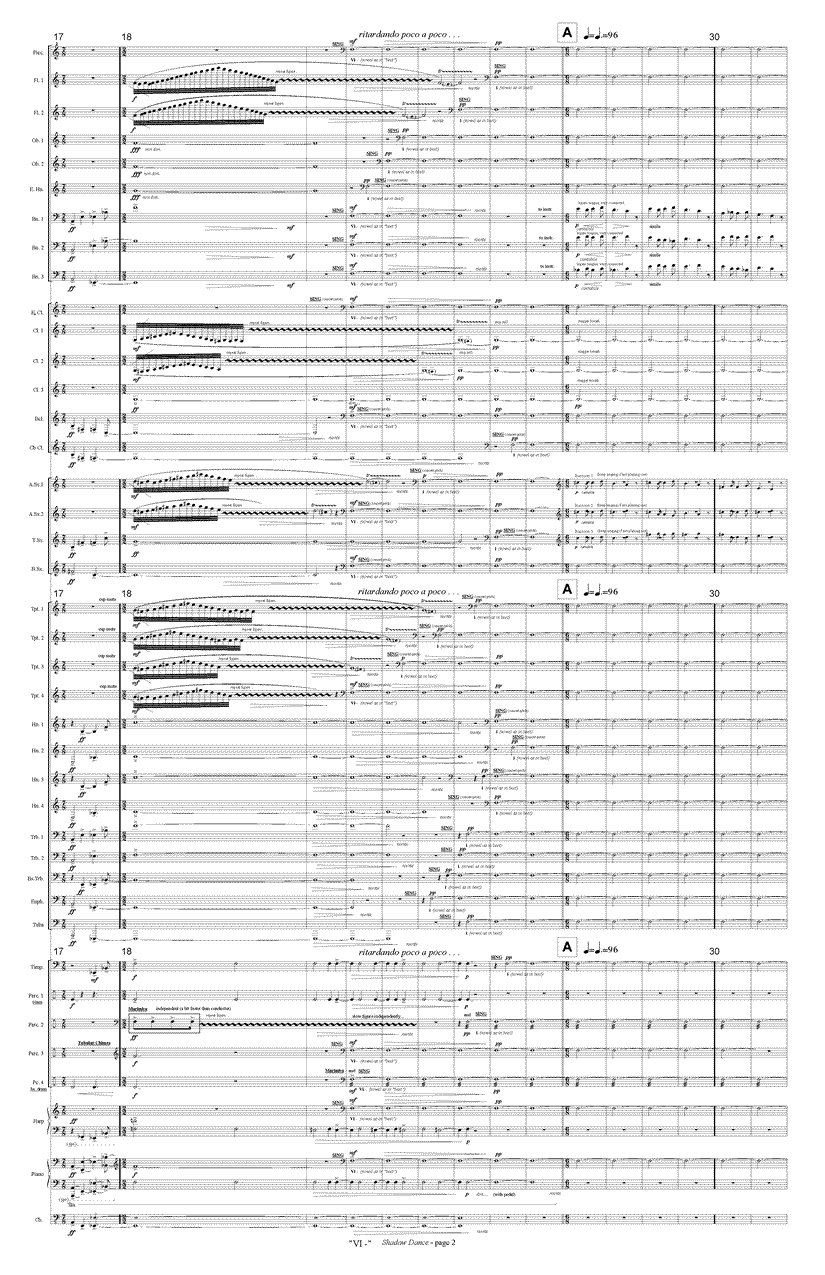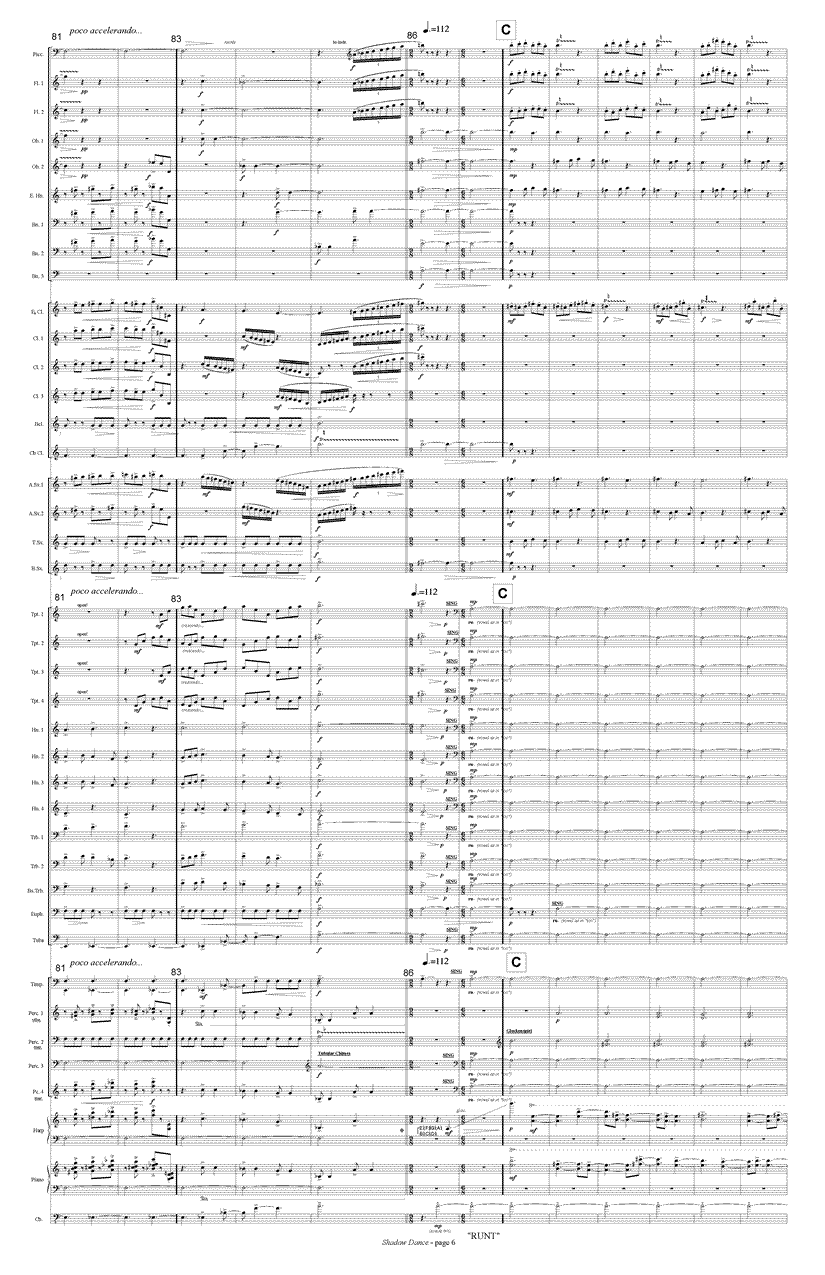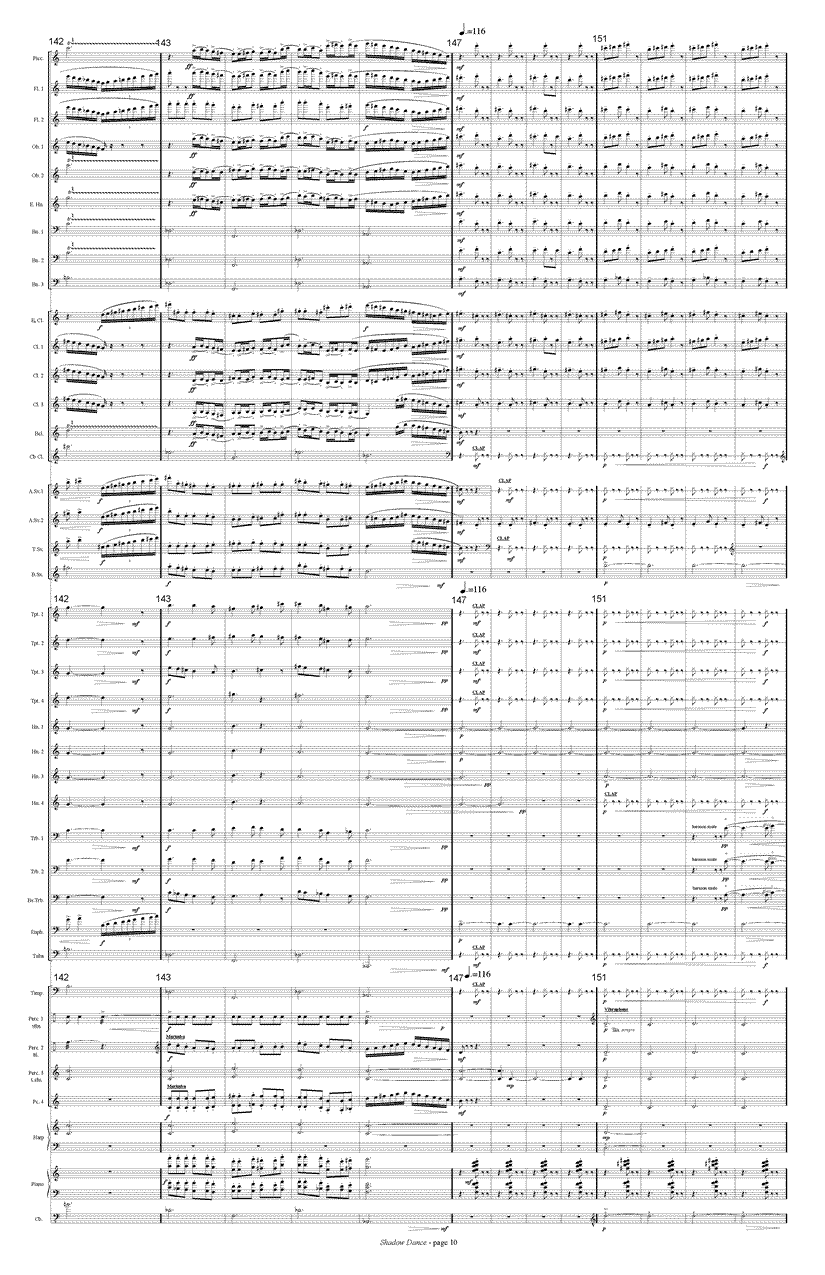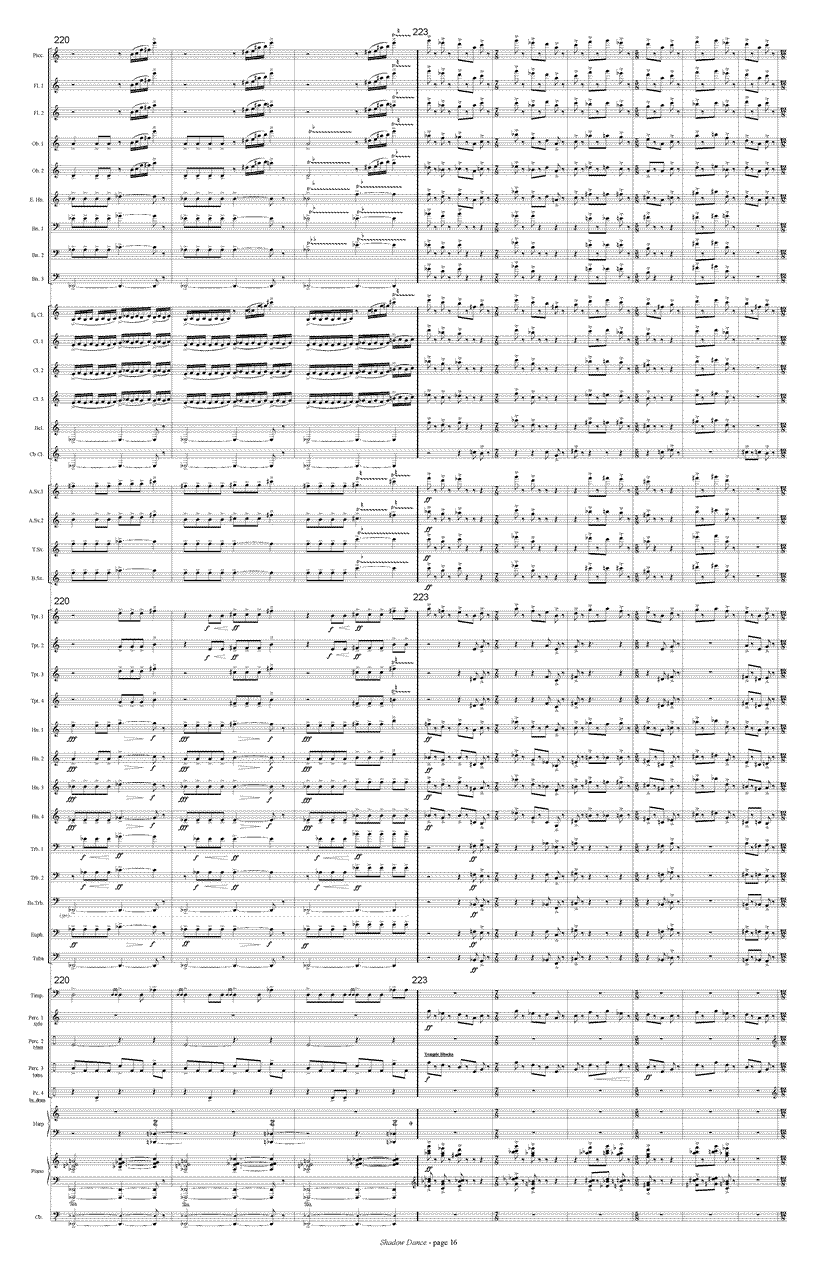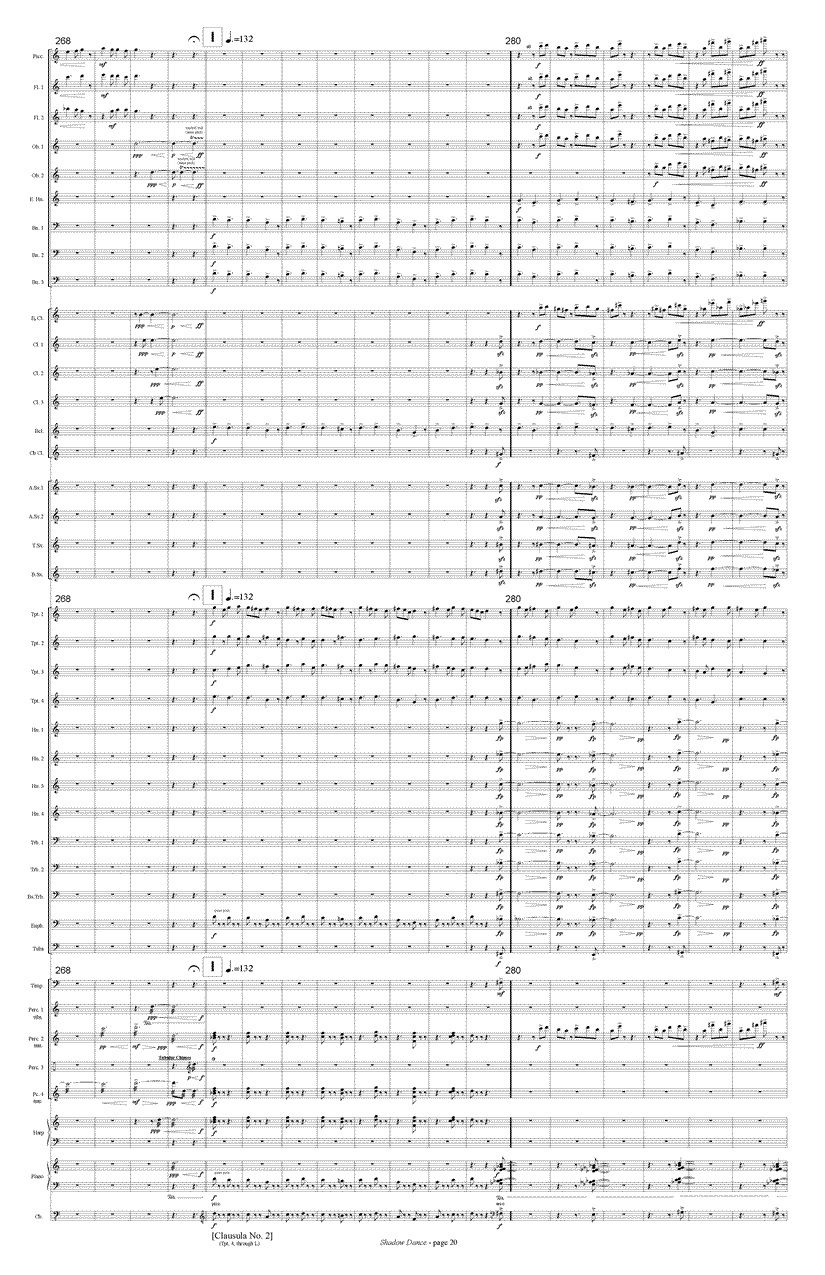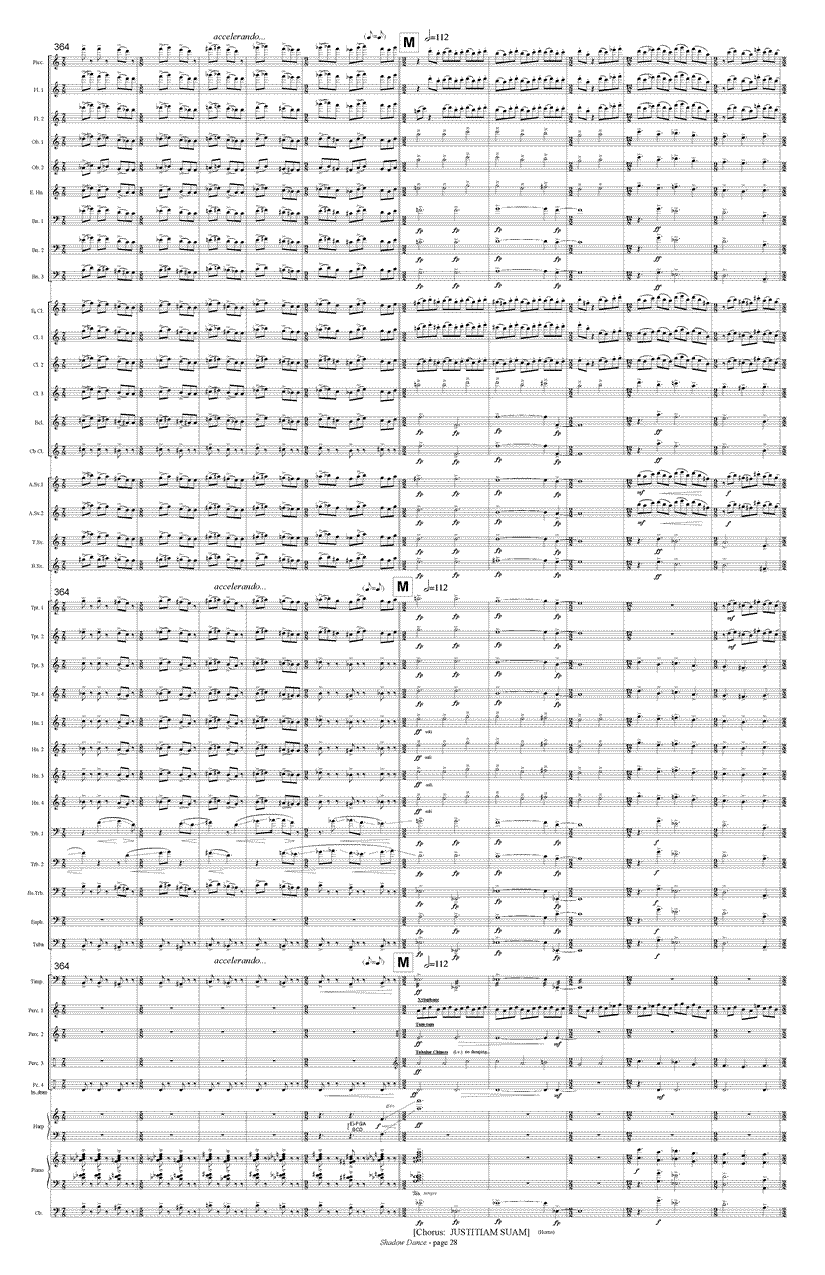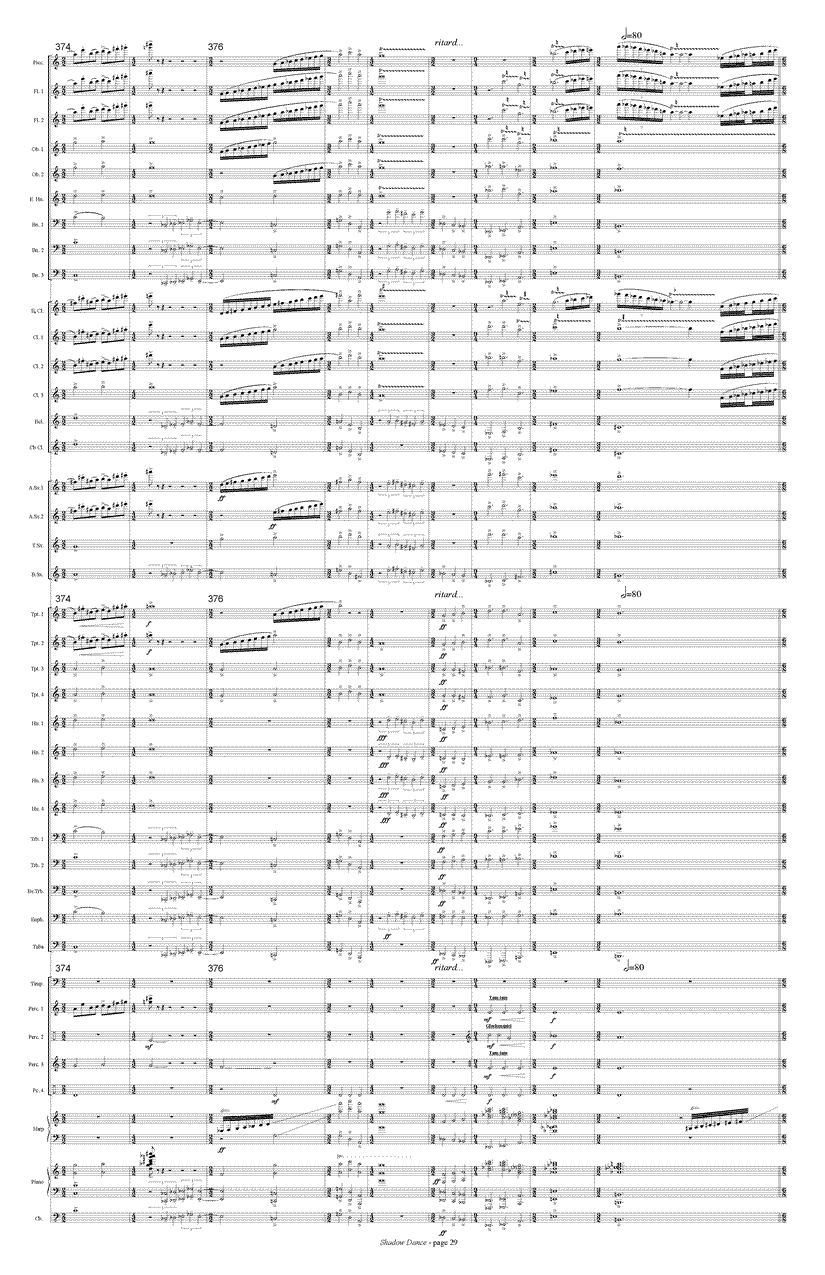Shadow Dance
(2006) for wind ensemble
duration: 9 minutes
grade level: 6
premiere: UNC at Greensboro Wind Ensemble, John R. Locke, October 5, 2006
Perusal Score

Recordings
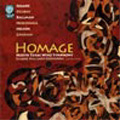 GIA CD-744 Homage
GIA CD-744 Homage
UNT Wind Symphony, Eugene Corporon
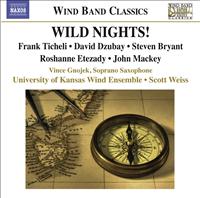 Naxos Wild Nights
Naxos Wild Nights
University of Kansas Wind Ensemble, Scott Weiss
"Equally effective are David Dzubay’s magical Shadow Dance, a revisitation of Pérotin’s Viderunt omnes and John Mackey’s hyperactive Concerto for Soprano Sax and Wind Ensemble. Dzubay takes the concept of organum to remarkable extremes, creating a frenzied, irreverent modern equivalent of the 13th-century composer’s primitive polyphony. It has little to do with the medieval—excepting, of course, the concluding monk-like chanting of the cantus firmus —but everything to do with joyful celebration of the past." Ronald E. Grames [Fanfare, Oct. 2009]

Program Note
Commissioned by the University of North Carolina at Greensboro Wind Ensemble, John R. Locke & Kevin M. Geraldi, Conductors.
“All things… are aggregates of atoms that dance and by their movements produce sounds. When the rhythm of the dance changes, the sound it produces also changes… Each atom perpetually sings its song, and the sound, at every moment, creates dense and subtle forms .” (Alexandra David-Neel, Tibetan Journey, London, 1936.)
Perotin, a choirmaster at the cathedral of Notre Dame, composed the first known works of music written in four parts at the end of the twelfth century. His Viderunt Omnes, circa 1199, is an organum based on a Gregorian chant sung at both Christmas and New Years. Perotin’s organum can be thought of as a lengthened shadow of the original chant. That is, individual notes of the chant are sustained in the bottom part for long periods of time, during which the three upper parts have active melodic sequences, often with a rather dance-like lilt. The upper parts playfully shadow each other with imitative melodic lines in the same register, constantly crossing back and forth. Contrasting with the sustained-note sections are more active discant sections, called clausulae, where the bottom part is also rhythmically active.
Shadow Dance, then, is a further shadowing of the chant, taking Viderunt Omnes as a base, or cantus firmus, and adding newly composed music above, below, and in between phrases of the Perotin, which is most evident during the first half of the composition. At the midpoint, “the rhythm of the dance changes” and the Perotin recedes, except for momentary glimpses back in time. Players in the ensemble are asked to sing portions of the original chant, namely the first and the last two words - Viderunt, and justitiam suum. Like the age in which we live, the character of this dance is unstable: by turns ominous, peaceful, celebratory, reflective, frantic, joyful, raucous, anxious, hopeful.
Text:
VIDERUNT OMNES
Viderunt omnes fines terrae salutare Dei nostri
Jubilate Deo omnis terra
Notum fecit Dominus salutare suum:
ante conspectum gentium revelavit justitiam suam
All the ends of the earth
have seen the salvation of our God.
Rejoice in the Lord, the whole earth.
The Lord has made known his salvation;
He has shown his righteousness in the sight of the people
Instrumentation:
Piccolo
Flute 1, 2
Oboe 1, 2
Bassoon 1, 2, 3 (cues available for bassoon 3 in other parts)
Eb Clarinet
Bb Clarinet 1, 2, 3
Bb Bass Clarinet
Bb Contrabass Clarinet
Eb Alto Saxophone 1, 2
Bb Tenor Saxophone
Eb Baritone Saxophone
Bb Trumpet 1, 2, 3, 4
F Horn 1, 2, 3, 4
Trombone 1, 2
Bass Trombone
Euphonium
Tuba
Timpani
4 Percussion:
1: Xylophone, Vibraphone,Tambourine,Tam-tam (large, but smaller than Pc. 2 or 3)
2: Glockenspiel, Marimba (4 octave), Triangle, Tam-tam (large; larger than Pc. 1, smaller than Pc. 3)
3: Tubular Chimes, Triangle, 4 Tom-toms, 5 Temple Blocks, Tam-tam (largest)
4: Marimba, Bass Drum
Harp
Piano
String Bass


